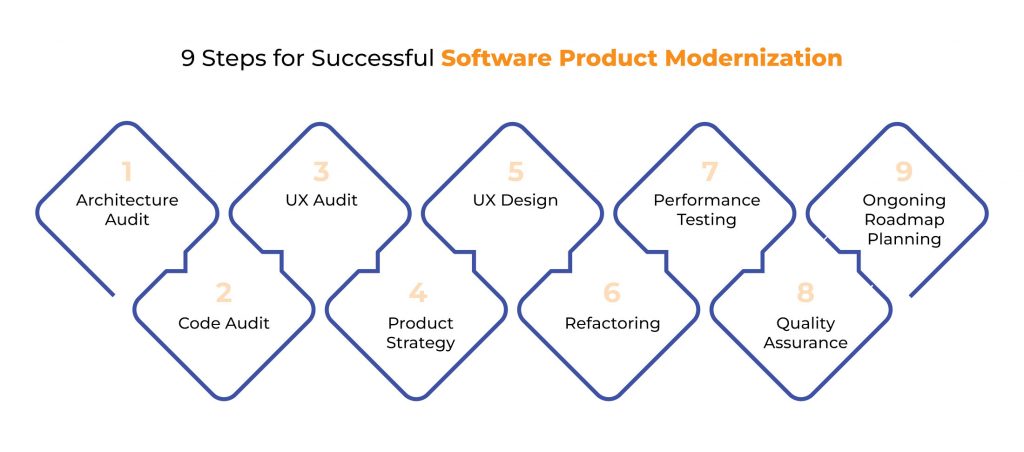In a world where technology dictates progress, AI and Large Language Models (LLMs) emerge as key drivers of business innovation. These groundbreaking technologies are not merely add-ons but fundamental forces reshaping how businesses operate, interact with customers, and make pivotal decisions.
1. The Evolution of AI in Business: A Quantum Leap with LLMs
The business landscape has been profoundly transformed by the evolution of AI, culminating in the advent of Large Language Models (LLMs). Initially, AI’s role in business was limited to automating routine tasks, significantly reducing human error and increasing efficiency. However, the emergence of LLMs marked a quantum leap. These sophisticated models understand and generate human-like text, providing nuanced interpretations of complex data. This advancement has enabled businesses to not only automate processes but also gain deeper insights, foster innovative problem-solving, and create more personalized customer experiences. LLMs represent a pivotal shift from mechanical automation to intelligent, strategic decision-making tools.
2. The Versatile World of LLMs: More Than Just Chatbots
Large Language Models (LLMs) have transcended their initial application as chatbots, unveiling a universe of possibilities in the business sector. Beyond automating customer service, LLMs are instrumental in complex tasks like nuanced data analysis, offering insights that drive strategic decisions. They play a pivotal role in content creation, generating accurate, engaging, and SEO-optimized material. LLMs also analyze customer feedback and market trends, providing businesses with a deeper understanding of consumer needs and preferences. This versatility extends LLMs’ utility far beyond mere conversation, making them integral to diverse aspects of business intelligence and innovation.
3. Enhancing Customer Engagement with Conversational AI
The integration of Large Language Models (LLMs) in conversational AI has dramatically enhanced customer engagement. The hospitality industry, grappling with high employee turnover rates, has found a powerful ally in Large Language Models (LLMs). According to the U.S. Bureau of Labor Statistics, the turnover rate in this sector hovered around 6% in spring 2023, the highest among all industries LLMs enable businesses to offer highly personalized and contextually relevant interactions, surpassing the capabilities of traditional chatbots. They understand and respond to customer queries with a level of sophistication that closely mimics human conversation, making interactions more natural and engaging. This advanced understanding allows businesses to provide swift, accurate solutions to customer inquiries, thereby boosting customer satisfaction. LLMs also gather and analyze conversational data, offering insights into customer preferences and behavior, which can be leveraged to tailor future communications and improve overall customer experience.
4. LLMs: Pioneering Smart Search and Efficient Information Retrieval
Large Language Models (LLMs) are revolutionizing the domain of smart search and information retrieval within businesses. These models excel at understanding and processing natural language queries, offering a more intuitive search experience. Unlike traditional search engines that rely on keyword matching, LLMs interpret the context and intent behind queries, providing more relevant and precise results. This capability is crucial for businesses dealing with large volumes of data, as it enhances the efficiency of information retrieval, leading to quicker decision-making and improved knowledge management. LLMs’ advanced search functionalities thus play a vital role in transforming data into a strategic asset for businesses.
5. The Marketing Revolution: Content Creation with LLMs
The advent of Large Language Models (LLMs) has sparked a marketing revolution, particularly in the realm of content creation. LLMs empower businesses to generate high-quality, engaging, and relevant content at an unprecedented scale and speed. These models are adept at crafting articles, social media posts, and marketing copy that resonate with targeted audiences. They can adapt to different brand voices and styles, ensuring consistency across various platforms. Moreover, LLMs can analyze trends and consumer behavior, enabling the creation of content that is not only compelling but also strategically aligned with current market dynamics. This innovation significantly enhances content marketing efficiency and effectiveness.
6. Seamless Integration of LLMs into Business Ecosystems
Large Language Models (LLMs) are designed for seamless integration into existing business ecosystems, enhancing various facets of operations. Their adaptability allows them to be easily incorporated into Customer Relationship Management (CRM) systems, workflow management tools, and other enterprise software. This integration facilitates more efficient data processing, automating and optimizing tasks like customer communication, report generation, and even decision-making processes. LLMs can also synchronize with databases and analytics tools, providing real-time insights and forecasts that are essential for strategic planning. This seamless melding of LLMs into business infrastructures significantly boosts operational efficiency and paves the way for innovative business practices.
7. Tailoring AI: Custom LLM Solutions for Diverse Business Needs
The customization capability of Large Language Models (LLMs) is a game-changer, offering tailored AI solutions to meet the diverse and specific needs of various businesses. LLMs can be fine-tuned to understand and generate industry-specific language and jargon, making them highly effective in specialized sectors like finance, healthcare, and legal. This customization extends to integrating with unique business processes, ensuring that AI solutions align perfectly with organizational objectives and workflows. By providing personalized AI tools, LLMs enable businesses to address their unique challenges and opportunities, thereby enhancing efficiency, accuracy, and innovation in their operations.
8. Empowering Strategic Decisions with Data-Driven Insights from LLMs
Large Language Models (LLMs) are pivotal in empowering businesses to make strategic decisions through data-driven insights. These models excel in analyzing vast datasets, extracting key patterns, trends, and correlations that might otherwise go unnoticed. LLMs can synthesize information from diverse sources, providing a comprehensive view that supports informed decision-making. This capability is particularly beneficial for market analysis, consumer behavior studies, and risk assessment. By processing and interpreting complex data at scale, LLMs enable businesses to make decisions that are not only faster but also more accurate, strategically sound, and aligned with long-term goals and market dynamics.
9. Gaining a Competitive Edge with Cutting-Edge LLM Technologies
Incorporating cutting-edge Large Language Models (LLMs) provides businesses with a significant competitive edge in today’s digital landscape. LLMs offer advanced capabilities that go beyond traditional AI applications, enabling companies to innovate rapidly and stay ahead of market trends. They enhance customer interactions, create more efficient business processes, and provide insightful data analysis, which are crucial for maintaining a competitive stance. By leveraging LLMs, businesses can optimize their operations, personalize customer experiences, and make data-driven decisions, all of which contribute to a stronger market position. This strategic adoption of LLM technologies signals a forward-thinking approach, essential for success in an increasingly digital world.
The Future Horizon: Expanding the Role of LLMs in Business
The future of Large Language Models (LLMs) in business points towards an ever-expanding horizon of possibilities and innovations. As LLMs continue to evolve, they are expected to play a more integral role in decision-making processes, predictive analytics, and personalized customer experiences. The potential for LLMs to interpret and generate increasingly complex and creative content suggests a future where AI could significantly contribute to strategy formulation and problem-solving. Moreover, as businesses strive for greater automation and efficiency, LLMs are likely to become central in orchestrating and optimizing a wide range of business functions, from operational management to customer engagement and beyond.















